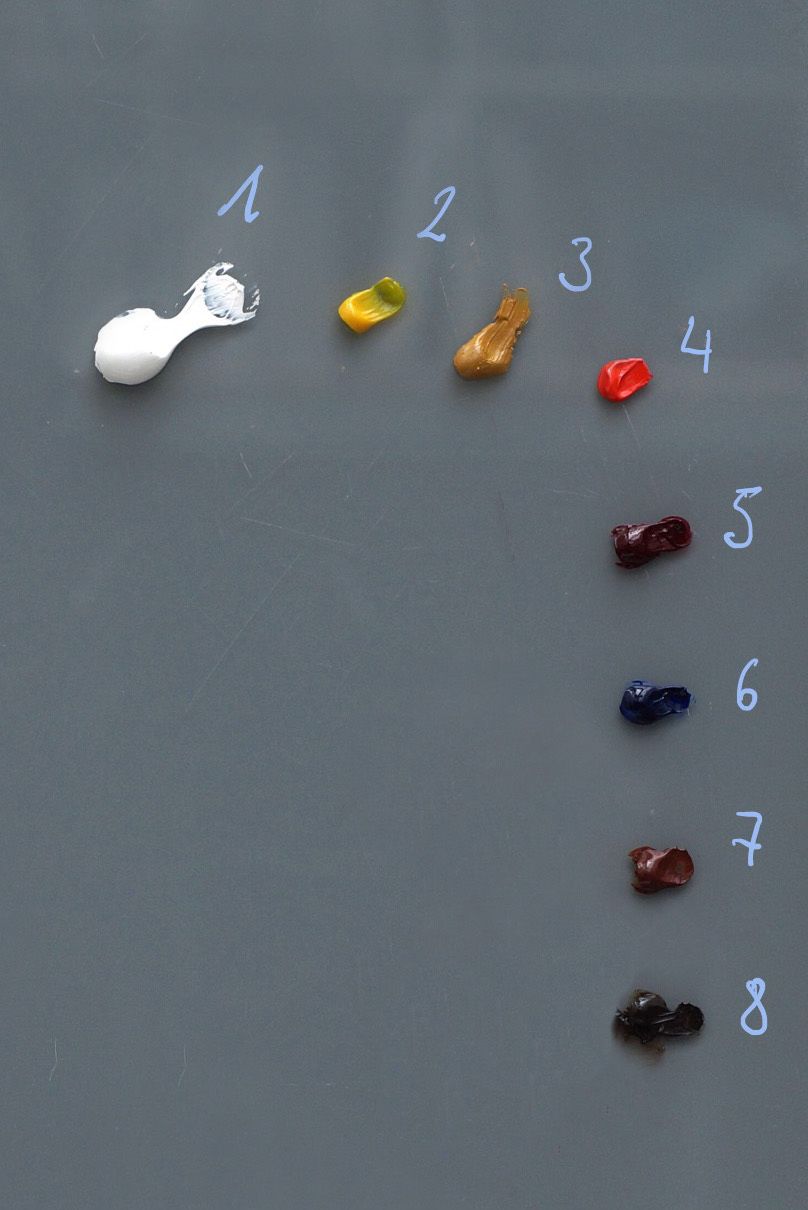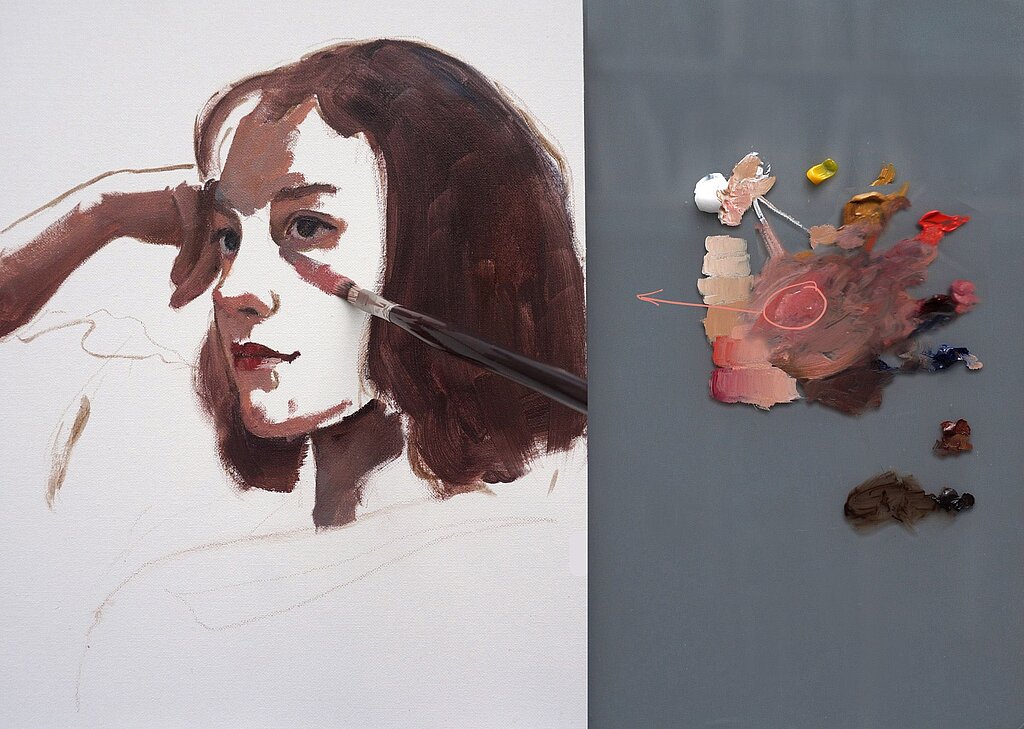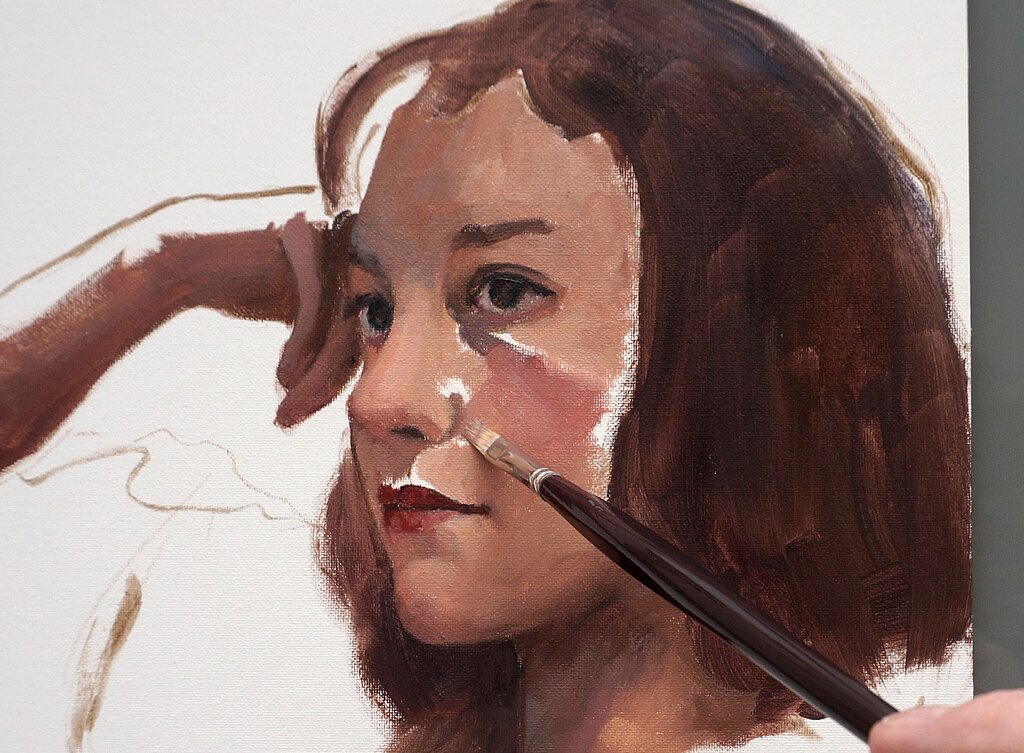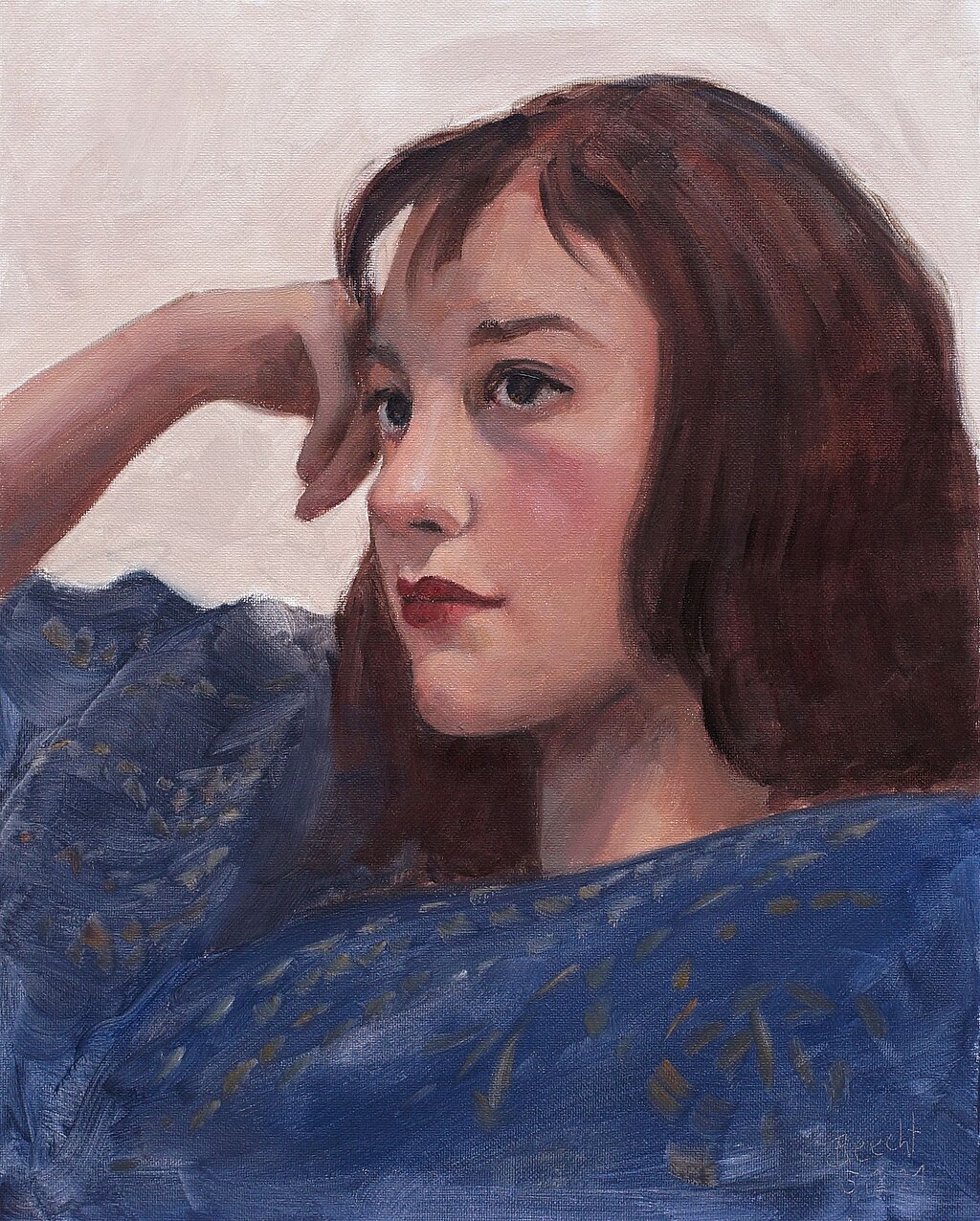Portrait in oil - painted with MUSSINI® - finest artists' resin-oil colours - by Thomas Beecht
After many experiments in portrait painting, a palette has emerged for Thomas Beecht which allows him to create every conceivable skin colours. He uses only 8 colours in his portraits, which creates a greater colour harmony within the painting.
Due to the high pigmentation of MUSSINI® resin-oil colours, the purity of the colours is maintained even if the colours were created by mixing 3 or 4 colours.
Materials:
- 24x30 cm painting board
- MUSSINI® resin-oil colours: Flake white hue 101, Transparent brilliant yellow 210, Light ochre 656, Cadmium red light 356, Alizarin madder lake 347, Ultramarine Blue deep 492, Natural burnt Sienna 661, Natural burnt Umber 666
- Brushes by da Vinci from the "Grigio" series in sizes 4, 6, 8 and 10 (cat's tongue shape / flat brush shape)and a small round brush for fine details
- Terpin from Schmincke 50 023
- rags & paper towel
- a simple coloured pencil for preliminary drawing
- a small painting spatula
- a template, a photograph of the person

Step 1
With the brown reddish coloured pencil I bring the preliminary drawing onto the painting board. I do this with the help of a beamer, which is certainly the easiest way. If you don't have a beamer, you can also try a fine preliminary drawing, or use other methods of transfer. Examples can be found on the internet

Step 2
Now I fill my palette with the colours. The order from light to dark is favourable. Attention: You will use more of the white, ochre and burnt Sienna, less of the yellow, cadmium red light and alizarin madder lake.


Step 3
I dilute some burnt umber with the terpin and paint the lines of the preliminary drawing with the small round brush.

Step 4
I mix a colour for the darkest parts of the head. I first use burnt Sienna, add a little white and then a small amount of ultramarine blue to break the reddish base tone. I use this to paint the darkest parts of the skin, such as the dark eyelid lines above the eyes, the nostrils, the mouth line, etc

Step 5
Now I get a little lighter and and mix some Alizarin madder lake to the existing colour and determine the final brightness of the colour with the appropriate of white. With this colour I paint the second darkest parts of the skin. And because I just have the dark colours on the brush, I paint the dark hairat the same time. I would proceed differently with a blond person! Because of the large surface area of the hair, I like to thin it a little with turpentine (the hair will be painted overagain later and will get accents).

Step 6
Now it's time for the middle shades. To our initial mixture of burnt Sienna, ultramarine blue and a little white, I now add light ochre and Alizarin madder lake. If I want the shade to be lighter, I add some more white.

Step 7
With the dark colours I also paint one of the most important parts of a successful portrait, the eyes. Burnt umber and a little ultramarine blue will be used for this. I achieve the whites of the eyeball by adding some ultramarine blue and white to a medium skin tone.

Step 8
Now I turn to the lighter side of the face. I start at the pretty reddish streaks above the cheekbones. I blend this light skin tone with a finely measured amount of my two reds, Cadmium red light and Alizarin madder lake and White. From there I move on to the other light shades on the lightside of the face. Therefore, I reduce the reddish part and strengthen the ochre part of the colour by adding ochre and white.



I also use small additions of blue and yellow to break up the dominance of the yellowish-reddish base tone. I also apply this colour to areas that have less blood flow, the forehead, temples and chin area.

Step 9
I then mix a very light, almost white shade of ochre and lotsof white, or yellow and cadmium red light with lots of white to emphasize the highlights on the lightest part of the skin.These are the tip of the nose, the bridge of the nose, the top of the cheekbone, above the eyebrow, etc. I also put some highlights in the hair by using lighter brush strokes to emphasize the strands of hair illuminated by the light.

Step 10
All skin areas have been painted, now I have to add the trimmings. For the kimono I use ultramarine blue, which Icolour a little with umber burnt and tone down. I add more burnt umber to the blue in the dark areas of the kimono and a little white to the lighter areas. I applied terpin-thinned paint on the entire kimono area to maintain the sketchy character of the painting. With a little ochre and white onthe brush tip, I loosely and quickly set the patterns onto the kimono.

For the background, I mix a lot of white and small amounts of ochre, Alizarin madder lake and blue. I pay attention to a harmonious interplay of these basic colours. If I want the background to be cooler, I use more blue and red, if I want itto be warmer and more brownish, I increase the proportion of ochre.

Result
I hope you enjoyed this tutorial, and it can help you to make a good portrait.

The artist

Thomas Beecht was born in Marburg/Lahn and studied painting at the Academy of Fine Arts in Munich. He spent several years in the South of France, where he discovered plein air painting for himself. At home in his Munich studio, he works on large-format paintings that focus on both modern landscape painting and the depiction of people. Recently, he has increasingly turned back to portrait painting. His works can be seen in several international museums.
Website: www.thomasbeecht.com
Instagram: @thomas_beecht

